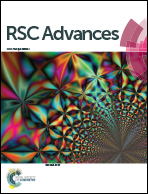Rigid versus flexible anilines or anilides confirm the bicyclic ring as the hydrophobic portion for optimal σ2 receptor binding and provide novel tools for the development of future σ2 receptor PET radiotracers†
Abstract
Despite their uncertain identification, σ2 receptors are promising targets for the development of diagnostics and therapeutics for tumor diseases. Among the σ2 ligands developed, the class of the flexible benzamides furnished an optimal pharmacophore for σ2 receptor high affinity ligands. A recent investigation suggested that flexible benzamides bind σ2 receptors in a bicyclic-like conformation due to an intramolecular H-bond, with 3,4-dihydroisoquinolinone derivatives reaching excellent σ2 affinity and selectivity. Herein, the bicyclic-preferred conformation for σ2 binding was confirmed through the development of 3,4-dihydroquinolin-(1H)2-one isomeric derivatives, 1,2,3,4-tetrahydroquinolines and the corresponding flexible anilides and anilines, all linked to the 6,7-dimethoxytetrahydroisoquinoline as a basic moiety. 3,4-Dihydroisoquinolin-(1H)2-one (10a) and 1,2,3,4-tetrahydroisoquinoline (11b) emerged for high σ2 affinity combined to an excellent σ2 versus σ1 selectivity. In particular, compound 11b with its low nanomolar σ2 affinity and impressive 2807-fold σ2 versus σ1 selectivity largely exceeded the biological profile of the best 3,4-dihydroisoquinolin-(2H)1-one reference compounds (1). Because of the absence of a cytotoxic effect, the modest interaction with the P-gp, an appropriate lipophilicity and the presence of easily radiolabeling functions, 11b deserves further investigation for the imaging of σ2 receptors via PET in tumors.


 Please wait while we load your content...
Please wait while we load your content...